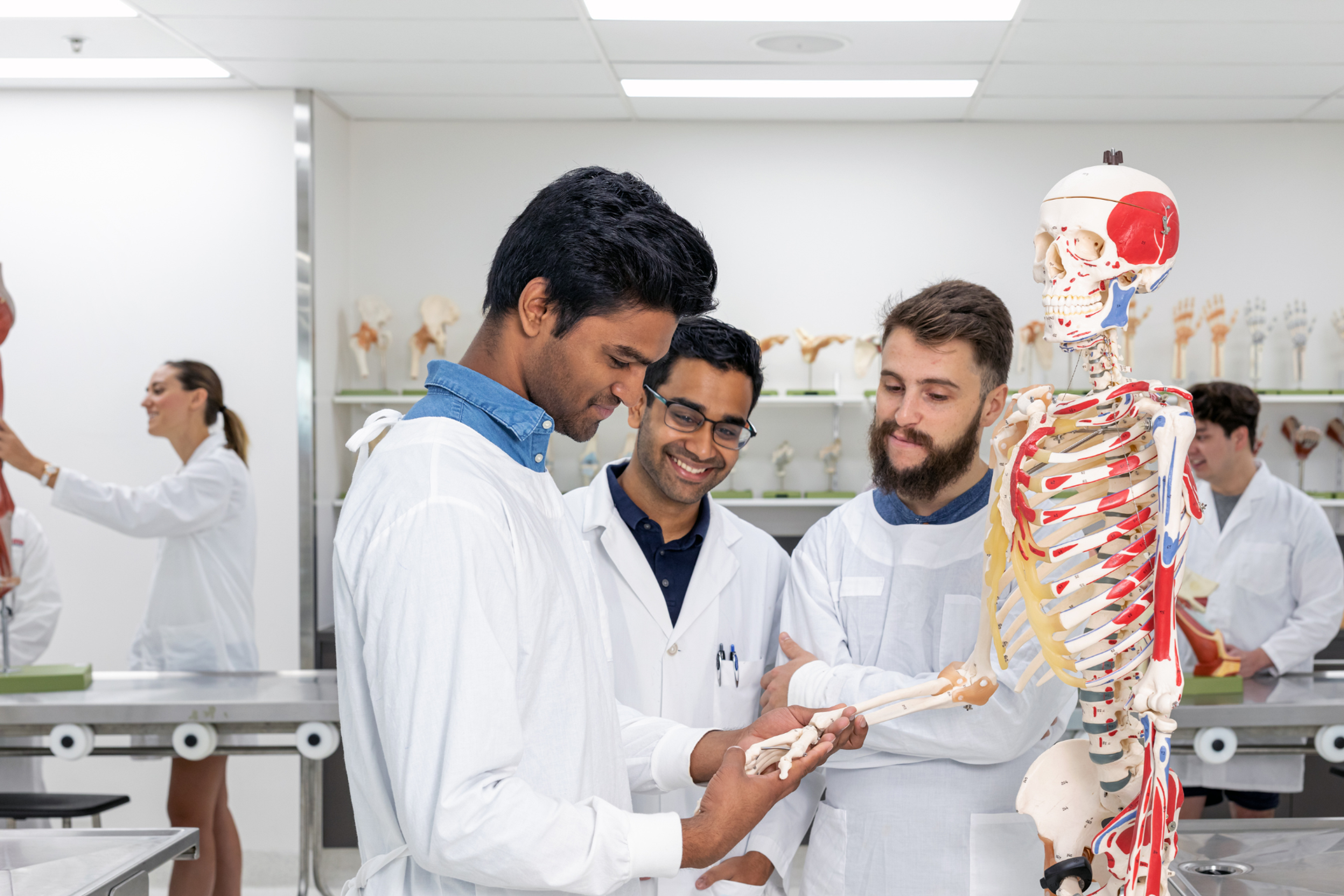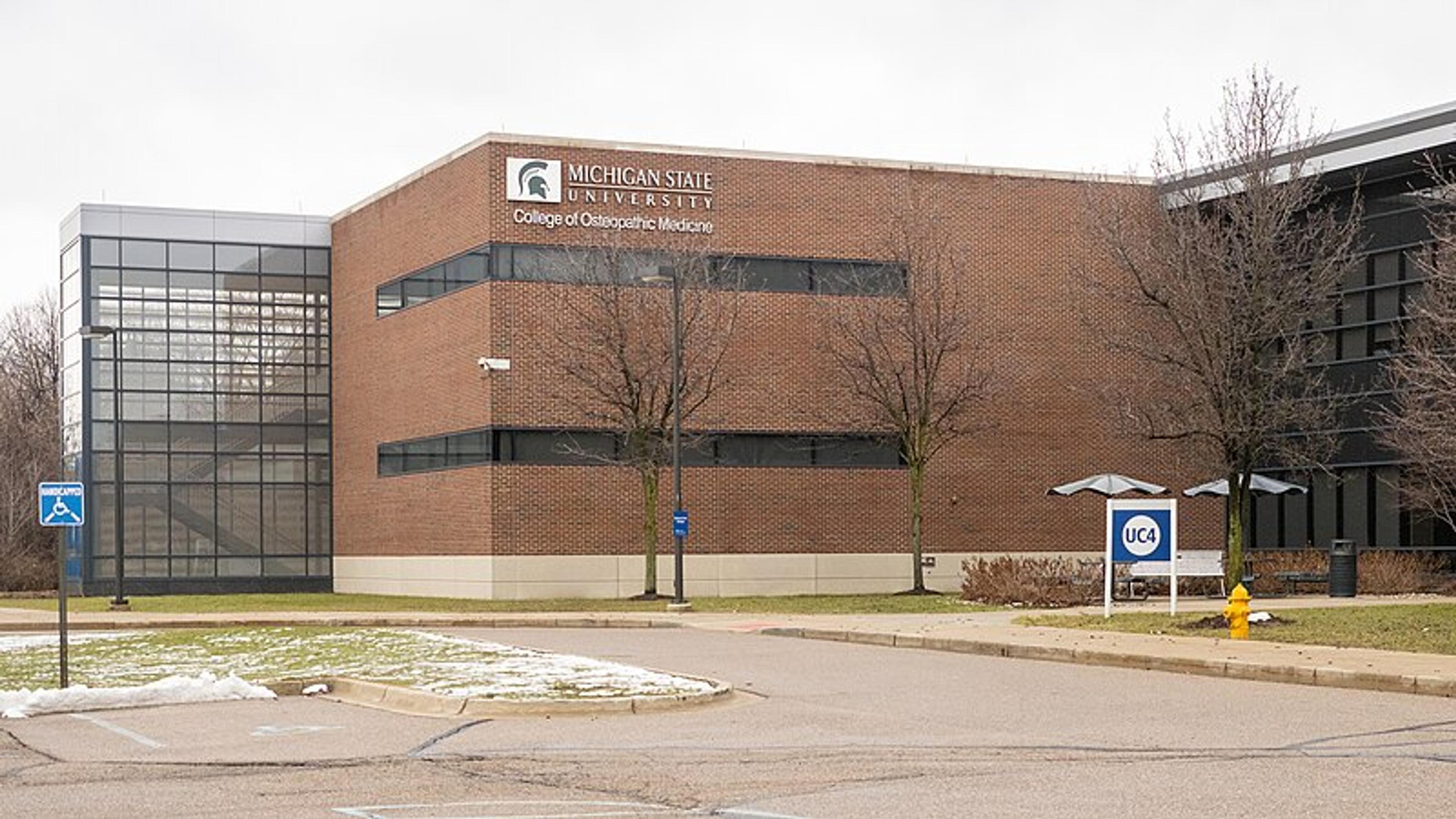The 25 Best Osteopathic Medical Schools (2025)
Discover the leading 25 osteopathic (DO) schools in the country and explore their unique programs, faculty, and clinical opportunities.
Posted June 26, 2025

Join a free event
Learn from top coaches and industry experts in live, interactive sessions you can join for free.
Table of Contents
Osteopathic medicine has grown significantly in recent years, with more students choosing to pursue a Doctor of Osteopathic Medicine (DO) degree. These programs focus on a holistic approach to patient care, emphasizing osteopathic manipulative medicine (OMM) and training in primary care. Choosing the right osteopathic medical school can impact career opportunities, residency placements, and medical training experiences.
If you are interested in pursuing a career in osteopathic medicine, it is crucial to choose the right school to ensure you receive the best education and training possible. This article will explore the 25 best osteopathic medical schools, the differences between DO and MD programs, the curriculum and training you can expect, admission strategies, and the various career paths available in osteopathic medicine.
What is Osteopathic Medicine?
Osteopathic medicine focuses on preventive care and treating the whole person, not just symptoms. Osteopathic physicians (DOs) receive the same foundational education as MD physicians, but they also train in osteopathic manipulative treatment (OMT), which involves hands-on techniques to diagnose and treat conditions.
Key Principles of Osteopathic Medicine
- Osteopathic philosophy prioritizes treating the body as an interconnected system.
- Osteopathic principles emphasize holistic care and preventive medicine.
- DOs are fully licensed medical doctors who can specialize in primary care or any other field.
DO programs are recognized for their commitment to community health, rural medicine, and training primary care physicians for underserved populations.
The 25 Best Osteopathic Medical Schools
When it comes to choosing a medical school, there are several factors to consider. The reputation and ranking of the institution, the quality of faculty and facilities, the availability of research opportunities, and the success of graduates in matching into residency programs all play a role in determining the top osteopathic schools. Here are the 25 best medical schools for Osteopathy in the United States.
| Osteopathic Medical Schools | Location | Year Est. | Annual Tuition & Fees | Avg. GPA | Avg. MCAT | Acceptance Rate |
|---|---|---|---|---|---|---|
| Edward Via College of Osteopathic Medicine | Blacksburg, VA | 2001 | $50,750 (in-state) | 3.6 | 502 | 15.1% |
| Lake Erie College of Osteopathic Medicine | Erie, PA | 1992 | $38,856 (in-state) | 2.7 | 503 | 7.2% |
| Lincoln Memorial University DeBusk College of Osteopathic Medicine | Harrogate, TN | 2007 | $44,520 | 3.58 | 501 | 9% |
| Marian University College of Osteopathic Medicine | Indianapolis, IN | 2013 | $59,850 | 3.71 | 504 | 6.5% |
| Michigan State University College of Osteopathic Medicine | East Lansing, MI | 1969 | $47,087 (in-state) | 3.6 | 506 | 5.5% |
| Nova Southeastern University Dr. Kiran C. Patel College of Osteopathic Medicine | Fort Lauderdale, FL | 1979 | $67,513 (in-state) (Doctorate) | 3.71 | 504 | 17.1% |
| Ohio University Heritage College of Osteopathic Medicine | Athens, OH | 1975 | $38,564 (in-state) (Doctorate) | 3.68 | 510 | 9.1% |
| Rowan University School of Osteopathic Medicine | Stratford, NJ | 1976 | $48,851 (in-state) $76,359 (out-of-state) | 3.67 | 506 | 3.9% |
| Touro University College of Osteopathic Medicine California | Vallejo, CA | 1997 | $66,600 | 3.3 | 500 | 10.6% |
| University of New England College of Osteopathic Medicine | Biddeford, ME | 1978 | $69,220 | 2.8 | 505 | 20% |
| University of North Texas Health Science Center at Fort Worth College of Osteopathic Medicine | Fort Worth, TX | 1970 | $13,079 (in-state) $28,767 (out-of-state) | 3.83 | 507 | 12.4% |
| University of Pikeville Kentucky College of Osteopathic Medicine | Pikeville, KY | 1997 | $53,000 (in-state) $53,000 (out-of-state) | 3.4 | 507 | 16% |
| Western University of Health Sciences College of Osteopathic Medicine of the Pacific | Pomona, CA | 1977 | 68,763 | 3.66 | 508 | 20% |
| West Virginia School of Osteopathic Medicine | Lewisburg, WV | 1972 | $63,113 (in-state) $95,913 (out-of-state) | 3.53 | 502 | 9% |
| William Carey University College of Osteopathic Medicine | Hattiesburg, MS | 2008 | $48,000 | 3.50 | 504 | 23% |
| A.T. Still University—Kirksville College of Osteopathic Medicine | Kirksville, MO | 1892 | $64,938 | 3.59 | 502 | 9% |
| Des Moines University College of Osteopathic Medicine | Des Moines, IA | 1898 | $66,300 | 3.71 | 507 | 6% |
| Kansas City University College of Osteopathic Medicine | Kansas City, MO | 1916 | $59,980 | 3.62 | 505 | 9.1% |
| Philadelphia College of Osteopathic Medicine | Philadelphia, PA | 1899 | $65,048 | 3.5 | 505 | 7.46% |
| Touro College of Osteopathic Medicine | Middletown, NY | 2007 | $66,600 | 3.58 | 506 | 2.8% |
| Rocky Vista University College of Osteopathic Medicine | Parker, CO | 2006 | $66,604 | 3.0 | 506 | 10% |
| Arizona College of Osteopathic Medicine of Midwestern University | Glendale, AZ | 1995 | $81,456 | 3.53 | 507 | 7.5% |
| Chicago College of Osteopathic Medicine of Midwestern University | Downers Grove, IL | 1900 | $83,153 | 3.63 | 507 | 7% |
| New York Institute of Technology College of Osteopathic Medicine | Old Westbury, NY | 1977 | $67,865 | 3.5 | 505 | 6% |
| Liberty University College of Osteopathic Medicine | Lynchburg, VA | 2012 | $49,440 | 3.0 | 499 | 4.2% |
Each of the osteopathic schools listed offers unique strengths, from research opportunities to specialized training in primary care rankings. The success of graduates practicing in medical specialties and residency placements reflects the quality of osteopathic medical education.
Graduates from these medical schools secure positions in primary care residencies, family medicine, and other health sciences fields. Schools like Des Moines University College of Osteopathic Medicine, Lake Erie College of Osteopathic Medicine, and Touro University California College of Osteopathic Medicine provide strong programs in medical training. Programs such as William Carey University College of Osteopathic Medicine, Pikeville Kentucky College of Osteopathic Medicine, and Still University School of Osteopathic Medicine focus on training medical doctors for rural and underserved areas. Institutions like Kirksville College of Osteopathic Medicine, Oklahoma State University Center for Health Sciences, and Western University of Health Sciences College of Osteopathic Medicine integrate osteopathic philosophy and academic excellence.
Choosing the Right Med School
Choosing the right med school is a crucial step in the journey to becoming a successful osteopathic physician. The top osteopathic medical schools listed above have established themselves as leaders in the field, offering exceptional educational programs and resources to their students.

Michigan State University College of Osteopathic Medicine
Michigan State University College of Osteopathic Medicine, for example, is known for its strong emphasis on clinical training and research opportunities. Students at Michigan State University College have access to state-of-the-art facilities and a diverse patient population, allowing them to develop the skills necessary to excel in their future careers.

Philadelphia College of Osteopathic Medicine
Philadelphia College of Osteopathic Medicine, on the other hand, prides itself on its comprehensive curriculum and commitment to community service. The school places a strong emphasis on primary care and preventive medicine, preparing its graduates to address the healthcare needs of underserved populations.

West Virginia School of Osteopathic Medicine
West Virginia School of Osteopathic Medicine stands out for its rural medicine program, which aims to train physicians who are equipped to serve in rural and underserved areas. Students at this institution gain hands-on experience in rural healthcare settings, developing the skills necessary to address the unique challenges faced by these communities.
Choosing a college of osteopathic medicine with strong osteopathic college accreditation ensures that students receive the highest standard of medical education. Schools that prioritize clinical training, patient care, and a holistic approach provide students with the foundation needed to succeed in MD programs, MD physicians, and osteopathic doctors pathways.
DO vs. MD Programs
While DO and MD programs share many similarities, there are a few key differences. The main difference lies in the philosophy and approach to patient care. DOs are trained to view the patient as a whole person, taking into account not only the physical symptoms but also the emotional, mental, and spiritual aspects of health. This holistic approach is known as the osteopathic philosophy. MDs, on the other hand, primarily focus on the diagnosis and treatment of diseases using evidence-based medicine.
Another difference between DO and MD programs is the use of osteopathic manipulative treatment (OMT). OMT is a hands-on technique used by DOs to diagnose and treat musculoskeletal conditions. It involves gentle manual manipulation of the joints, muscles, and tissues to restore balance and promote healing. MDs do not receive training in OMT.
Despite these differences, both DOs and MDs can practice in any specialty, and both are eligible for the same residencies and board certifications.
Read: D.O. Vs M.D.: Understanding the Differences and Similarities
DO vs. MD: Differences and Similarities
Both DO and MD programs follow similar medical education structures, but there are a few key differences:
| Feature | DO Schools | MD Schools |
|---|---|---|
| Philosophy | Holistic approach, emphasis on OMT | Focus on disease-based treatment |
| Residency Placement | Increasing parity with MD schools, especially in primary care residencies | More specialty-focused |
| Primary Care Focus | Stronger emphasis on family medicine, internal medicine, and rural health | Broader focus across specialties |
| OMT Training | Required | Not included |
Curriculum and Training
The curriculum for osteopathic medical schools is similar to that of an allopathic medical school, with a strong emphasis on basic sciences, clinical skills, and clinical rotations. Students learn anatomy, physiology, biochemistry, pharmacology, and other foundational sciences in the early years of their medical education. In the later years, they gain hands-on experience through clinical rotations in various specialties.
In addition to the core curriculum, osteopathic medical schools also provide training in OMT. This additional training allows DOs to incorporate manipulative techniques into their treatment plans, providing a unique approach to patient care.
Admission Strategies
Admission to osteopathic medical schools is highly competitive, with a limited number of seats available each year. To increase the chances of acceptance, it is essential to develop a strong application. Here are some strategies to consider:
- Focus on academic excellence by maintaining a high GPA and scoring well on the Medical College Admission Test (MCAT).
- Get involved in extracurricular activities that demonstrate leadership, service, and commitment to the community.
- Seek out research opportunities to showcase scientific inquiry and critical thinking skills.
- Gain clinical experience by volunteering or working in healthcare settings.
- Obtain strong letters of recommendation from professors, healthcare professionals, or mentors who can speak to one’s abilities and character.
- Write a compelling personal statement that highlights one’s passion for osteopathic medicine and one’s unique qualities.
By following these strategies, you can enhance your chances of securing a spot at one of the top medical schools in Osteopathy.
Career Paths in Osteopathic Medicine
Osteopathic medicine offers a wide range of career paths and specialties. DOs can practice in primary care fields such as:
- Family medicine
- Internal medicine
- Pediatrics
- Obstetrics/Gynecology
providing comprehensive and holistic care to patients of all ages. They can also choose to specialize in areas such as:
- Cardiology
- Dermatology
- Orthopedic surgery
- Psychiatry
and many others. Additionally, DOs have the option to pursue:
- Academic medicine
- Research
- Public health
- Healthcare Administration
Some may choose to work in underserved communities or participate in medical mission trips to provide primary care to those in need. The career options in osteopathic medicine are vast and diverse, allowing individuals to find their niche and make a positive impact on the health and well-being of others.
Choosing the right osteopathic medical school is crucial to receiving the best education and training in osteopathic medicine. The top osteopathic medical schools listed above have a proven track record of excellence and produce highly skilled DOs. Understanding the differences between DO and MD school programs, exploring the curriculum and training offered, and implementing effective admission strategies can help in having a successful career in osteopathic medicine. Whether choosing to specialize in a particular field or pursue a career in primary care, the opportunities in osteopathic medicine are endless.
Bottom Line
Choosing the right osteopathic medical school is essential for a successful career as a Doctor of Osteopathic Medicine (DO). The best osteopathic medical schools offer strong clinical training, high primary care residency match rates, and a focus on osteopathic philosophy and holistic care. Schools like Michigan State University College of Osteopathic Medicine, Philadelphia College of Osteopathic Medicine, and West Virginia School of Osteopathic Medicine excel in medical education and patient care. With 42 accredited osteopathic medical schools in the U.S., students can find programs that align with their goals in primary care, medical specialties, and community health, ensuring they are well-prepared for residency and practice.
Work with Medical School Admissions Coaches
To receive expert guidance on gaining admission to a leading osteopathic medical school, connect with Top Medical School Admissions Coaches for personalized mentorship and support.
Related Articles
For more insights on osteopathic medical schools, admissions, and career paths, check out these related articles:
- The Best 50+ Free Resources for the MCAT Exam
- The Best DO (Osteopathic) Medical Schools in the US
- Liberty University College of Osteopathic Medicine: Admission Requirements and Application Process
- Lake Erie College of Osteopathic Medicine (LECOM): Program & Application Overview
- Medical School Acceptance Rates, GPA, and MCAT Scores of the Top 15 Programs
FAQs
What is the most prestigious osteopathic medical school?
- Many consider Michigan State University College of Osteopathic Medicine (MSUCOM) and Philadelphia College of Osteopathic Medicine (PCOM) to be among the most respected DO schools in the U.S. They have strong clinical affiliations, research opportunities, and long-standing reputations in the osteopathic community.
What is the hardest osteopathic medical school to get into?
- The most competitive osteopathic schools tend to have low acceptance rates and high average GPAs and MCAT scores. MSUCOM, Touro College of Osteopathic Medicine, and Western University of Health Sciences are often considered harder to get into due to their selectivity and applicant volume.
What is the easiest osteopathic medical school to get into?
- Some DO schools have higher acceptance rates and slightly lower average scores, making them more accessible for certain applicants. Schools like Liberty University College of Osteopathic Medicine and Lincoln Memorial University–DeBusk College of Osteopathic Medicine are known to have more flexible admissions thresholds, but you still need a solid application.
Is a DO or MD easier?
- The path to becoming a DO or MD is similar in difficulty. Both require four years of medical school, licensing exams, and residency. The difference lies in approach. DOs receive additional training in osteopathic manipulative medicine. Admissions competitiveness can vary, but both paths demand strong academics and commitment.
Browse hundreds of expert coaches
Leland coaches have helped thousands of people achieve their goals. A dedicated mentor can make all the difference.















